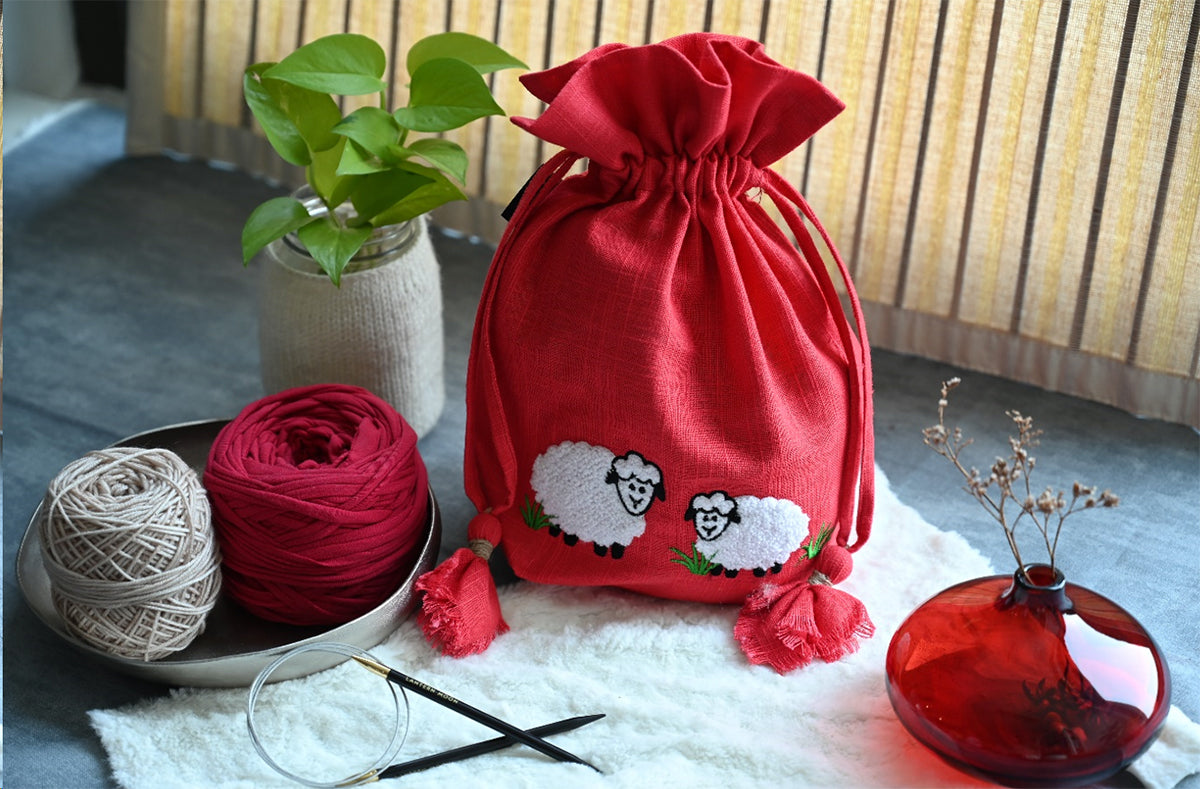
For new knitters, it’s thrilling to cast on for a new project. However, there’s a plethora of cast-on techniques each tailored for the type of knitting project. While every method works by making loops with yarn on your knitting needles, the right method lays the foundation of working on the project. In this blog, we’ll walk you through the single cast-on method know as one of the simplest techniques to learn. For every knitter it is a great first step in creating beautiful, sturdy edges in your projects. Even its applications make it incredibly useful. So, let’s get started on learning everything you need to know about this essential skill and how to make the most of it in your knitting projects.
What is the Single Cast-On Method?
The single cast-on also known as the “thumb cast-on” or “backward loop cast-on” is is a quick and basic way to start knitting projects. The primary appeal of this technique lies in its simplicity and speed. Unlike other cast-on techniques such as the long-tail cast-on or the cable cast-on, the single cast-on requires no extra preparation—just a single strand of yarn and one of your knitting needles. Whether you work back and forth with single-pointed needles or circulars or knit in round with a set of double-pointed needles or circulars you can apply this technique.
This method is created by making a loop with the yarn and transferring it to your knitting needle in a way that resembles a backward loop. It is especially helpful for projects that don’t require a particularly stretchy or tight edge.
While it may not be the best choice for projects that need durability at the edge, like socks or hats, it is often used for adding stitches mid-row, creating provisional edges, and working on loose-fitting projects such as blankets or scarves.
Materials You’ll Need
To get started, all you’ll need is your yarn and knitting needles. Using yarns in medium-weight categories like worsted or DK can help beginners see their stitches clearly and keep their loops manageable. The single cast-on technique works well with nearly any yarn type, though for delicate yarns or stretchy projects, you might consider alternate methods for a more resilient edge.
Step-by-Step Guide to the Single Cast-On
1. Make a Slipknot
Start by making a slipknot with your yarn. This loop will be your very first stitch.
Place this slipknot onto your needle and tighten it gently—not too tight, as you want some flexibility in your stitches.
2. Position Your Yarn and Thumb
With your left hand, hold the needle with the slipknot.
Use your right hand to pick up the working yarn, letting it drape over your thumb and hang down. The yarn should create a loop around your thumb.
3. Create the Loop
Insert the knitting needle through the loop formed around your thumb, starting from the bottom and moving upwards.
Slide the loop from your thumb onto the needle, tightening it just enough to stay in place.
4. Repeat the Process
Continue creating loops by positioning the yarn over your thumb and transferring each loop onto the needle.
Keep the loops evenly spaced and avoid pulling too tightly. The loops should be snug but flexible enough to allow you to knit into them in the next row.
When to use the Single Cast-On Technique?

The simple cast on works amazingly well for various purposes.
- Adding Stitches Mid-Project: If you need to increase the width of your project, you can use the single cast-on to add stitches at the end of a row.
- Provisional Edges for Seamless Joins: For projects where you may want to graft two pieces together, you can use the single cast-on as a provisional method, creating a flexible edge that you can easily work into later. You can refer to our previous blog on how to knit or crochet a provisional cast on.
- New Knitters’ First Projects: For new knitters, the single cast-on is an excellent entry point into the world of knitting. This method doesn’t require much dexterity or intricate fingerwork, making it ideal for learning the basics without frustration.
- Lightweight Projects: This technique works well on projects that don’t need high durability at the edge, such as scarves or lightweight shawls.
As you become more comfortable with the single cast-on, you can use this technique to add stitches mid-row or to create edges that you’ll pick up stitches from later on. The single cast-on is a skill worth mastering for every knitter. Not only is it beginner-friendly, but it also has applications for more advanced projects. Its straightforward structure makes it a reliable choice for lightweight projects that require a soft, flexible edge. With this method, you’ll build confidence as a knitter and gain the skills necessary to explore more complex techniques. Learning the single cast-on sets a foundation for other, more complex cast-ons like the twisted German cast-on or cable cast-on. It’s the starting point that leads to more versatility as your skills grow.
So, grab your yarn and Lantern Moon knitting needles, and give the single cast-on a try. It’s a quick, rewarding way to start your project—and the beginning of a lifelong knitting journey! Whether you’re working on a cozy scarf, a light shawl, or adding stitches mid-row, the single cast-on is a trusty skill that’s always worth having in your knitting toolkit.
